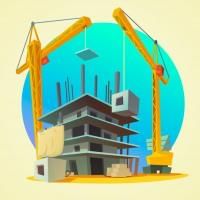Civil Engineering (CE) Exam > Civil Engineering (CE) Questions > Creep is thea)longitudinal movement of railb)...
Start Learning for Free
Creep is the
- a)longitudinal movement of rail
- b)lateral movement of rail
- c)vertical movement of rail
- d)difference in level of two rails
Correct answer is option 'A'. Can you explain this answer?
Most Upvoted Answer
Creep is thea)longitudinal movement of railb)lateral movement of railc...
Movement of rails of track in longitudinal direction due to movement of trains on it known as creep
Free Test
FREE
| Start Free Test |
Community Answer
Creep is thea)longitudinal movement of railb)lateral movement of railc...
Creep in Rail Tracks
Rail creep is the longitudinal movement of rail that occurs over time due to various factors. It is a common issue in railway tracks and can lead to safety hazards if not addressed properly.
Causes of Rail Creep
- Temperature changes: As temperatures fluctuate, rail tracks expand and contract, causing them to move longitudinally.
- Train loads: The weight and speed of trains passing over the tracks can also contribute to rail creep.
- Improper maintenance: Lack of proper maintenance can lead to increased rail creep over time.
Effects of Rail Creep
- Misalignment: Rail creep can cause the rails to become misaligned, affecting the smooth movement of trains.
- Increased wear and tear: The movement of rails can result in increased wear and tear on the tracks, leading to the need for more frequent maintenance.
- Safety risks: Rail creep can pose safety risks to both trains and passengers if not addressed promptly.
Preventing Rail Creep
- Rail anchors: Using rail anchors can help prevent rail creep by securing the rails in place.
- Regular maintenance: Regular inspections and maintenance can help identify and address rail creep before it becomes a major issue.
- Proper track design: Ensuring proper track design and installation can also help prevent rail creep in the long run.
In conclusion, rail creep is a common issue in railway tracks that can have various causes and effects. By taking preventive measures and addressing rail creep promptly, railway authorities can ensure the safety and efficiency of their rail networks.

|
Explore Courses for Civil Engineering (CE) exam
|

|
Similar Civil Engineering (CE) Doubts
Question Description
Creep is thea)longitudinal movement of railb)lateral movement of railc)vertical movement of raild)difference in level of two railsCorrect answer is option 'A'. Can you explain this answer? for Civil Engineering (CE) 2025 is part of Civil Engineering (CE) preparation. The Question and answers have been prepared according to the Civil Engineering (CE) exam syllabus. Information about Creep is thea)longitudinal movement of railb)lateral movement of railc)vertical movement of raild)difference in level of two railsCorrect answer is option 'A'. Can you explain this answer? covers all topics & solutions for Civil Engineering (CE) 2025 Exam. Find important definitions, questions, meanings, examples, exercises and tests below for Creep is thea)longitudinal movement of railb)lateral movement of railc)vertical movement of raild)difference in level of two railsCorrect answer is option 'A'. Can you explain this answer?.
Creep is thea)longitudinal movement of railb)lateral movement of railc)vertical movement of raild)difference in level of two railsCorrect answer is option 'A'. Can you explain this answer? for Civil Engineering (CE) 2025 is part of Civil Engineering (CE) preparation. The Question and answers have been prepared according to the Civil Engineering (CE) exam syllabus. Information about Creep is thea)longitudinal movement of railb)lateral movement of railc)vertical movement of raild)difference in level of two railsCorrect answer is option 'A'. Can you explain this answer? covers all topics & solutions for Civil Engineering (CE) 2025 Exam. Find important definitions, questions, meanings, examples, exercises and tests below for Creep is thea)longitudinal movement of railb)lateral movement of railc)vertical movement of raild)difference in level of two railsCorrect answer is option 'A'. Can you explain this answer?.
Solutions for Creep is thea)longitudinal movement of railb)lateral movement of railc)vertical movement of raild)difference in level of two railsCorrect answer is option 'A'. Can you explain this answer? in English & in Hindi are available as part of our courses for Civil Engineering (CE).
Download more important topics, notes, lectures and mock test series for Civil Engineering (CE) Exam by signing up for free.
Here you can find the meaning of Creep is thea)longitudinal movement of railb)lateral movement of railc)vertical movement of raild)difference in level of two railsCorrect answer is option 'A'. Can you explain this answer? defined & explained in the simplest way possible. Besides giving the explanation of
Creep is thea)longitudinal movement of railb)lateral movement of railc)vertical movement of raild)difference in level of two railsCorrect answer is option 'A'. Can you explain this answer?, a detailed solution for Creep is thea)longitudinal movement of railb)lateral movement of railc)vertical movement of raild)difference in level of two railsCorrect answer is option 'A'. Can you explain this answer? has been provided alongside types of Creep is thea)longitudinal movement of railb)lateral movement of railc)vertical movement of raild)difference in level of two railsCorrect answer is option 'A'. Can you explain this answer? theory, EduRev gives you an
ample number of questions to practice Creep is thea)longitudinal movement of railb)lateral movement of railc)vertical movement of raild)difference in level of two railsCorrect answer is option 'A'. Can you explain this answer? tests, examples and also practice Civil Engineering (CE) tests.

|
Explore Courses for Civil Engineering (CE) exam
|

|
Signup to solve all Doubts
Signup to see your scores go up within 7 days! Learn & Practice with 1000+ FREE Notes, Videos & Tests.





























